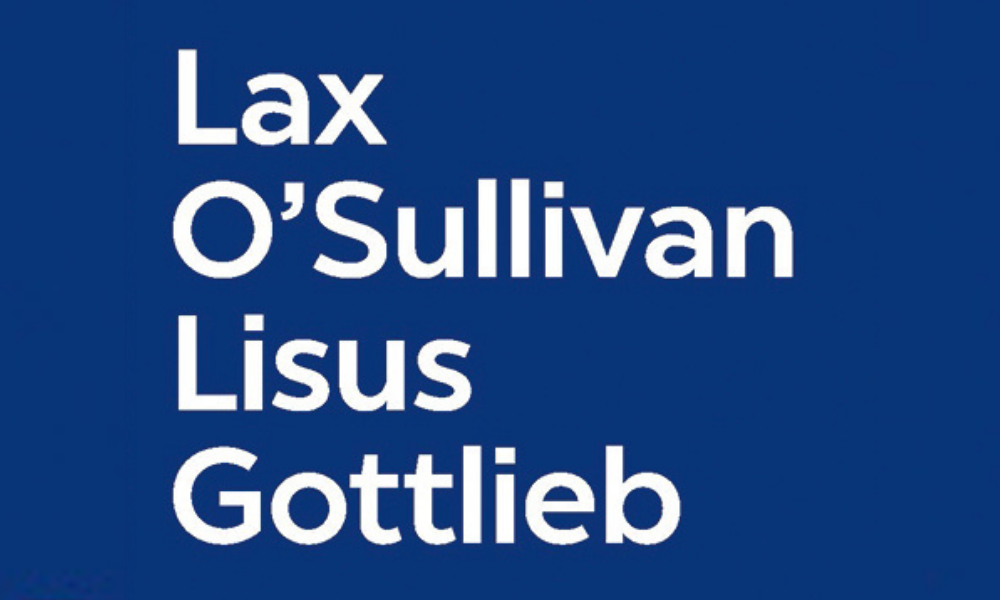Access to housing has become a crisis in Canada. Canada Mortgage and Housing Corporation’s research estimates that an additional 3.5 million new units are needed by 2030 to restore affordability and close the supply gap. And even if you manage to secure a property in Canada’s competitive market, there are potential issues that may impact a successful closing or the ability to develop the property.
In this article, Michael Currie discusses Certificates of Pending Litigation (CPL), a common legal trap that can hold up property sales, development, and financing.
What are CPLs? What does it mean for buyers, sellers, developers?
Certificates of pending litigation have the same effect as an “interlocutory injunction restraining dealing with the land”.[1] In layman terms, a CPL ties up the land until the legal dispute is resolved. Any prospective buyer, real estate agent, or lender who does a title search will see the CPL on title and will want to stay clear of the property.
For buyers who have closed on a property that subsequently has a CPL registered on title, it means they will not be able to do much with the land until the CPL is discharged. For instance, the buyer can live at the house, but will be unable to sell it. If it is vacant land, the buyer will be unable to secure financing to develop the land. A CPL discourages lenders from giving money to any development project. Lenders do not like the risk of litigation.
For sellers, a CPL on title will for practical purposes preclude them from completing a sale. Real estate agents or lenders should immediately flag for an interested buyer that a CPL is registered.
For developers, it means they will be unable to secure financing for land development. The land will stand vacant until the CPL issue is resolved. If a developer is desperate to start land development immediately, it will need to: (i) negotiate with the person or entity who registered the CPL to give them some sort of security (assuming their claim has any merit); (ii) bring a motion to discharge the CPL; or (iii) try to move to trial as quickly as possible[2] to have the matter resolved.
Why seek a CPL?
The most common situation for someone to seek a CPL is to prevent a sale of land while parties fight over their interest in the land. For example, let’s say “A” and “B” are equal owners of a property. “A” and “B” have a falling out. “B” refuses to acknowledge “A”’s ownership of the property. “B” puts the land up for sale. “A” will bring a claim and a motion to register a CPL on the property to prevent “B” from selling it. In effect, the CPL protects “A”’s interest in the land while A’s lawsuit against “B” moves through the court system.
A CPL is intended to protect an interest in land in situations where other remedies would be ineffective. It is not intended to be an instrument to secure a claim for damages.[3]
What is the test to obtain and discharge a CPL?
Rule 42 of the Rules of Civil Procedure governs CPLs. The Court can discharge a CPL under Rule 42.02.[4]
In 2010, Master Glustein (as he then was) summarized the factors the court must consider on a CPL motion:[5]
- the threshold in respect of the “interest in land” issue in a motion respecting a CPL (as that factor is set out at section 103(6) of the Courts of Justice Act, R.S.O. 1990, c. C.43) is whether there is a triable issue as to such interest, not whether the plaintiff will likely succeed;
- the onus is on the party opposing the CPL to demonstrate that there is no triable issue in respect to whether the party seeking the CPL has “a reasonable claim to the interest in the land claimed”; and
- the governing test is that the court must exercise its discretion in equity and look at all relevant matters between the parties in determining whether a CPL should be granted or vacated.
The Court will also consider the “Dhunna factors” to grant or discharge a CPL, which includes the following:[6]
- whether the Plaintiff is a shell corporation;[7]
- whether the land is “unique”, meaning if the land can be easily replaced;
- the ease or difficulty in calculating damages;
- whether damages could be a satisfactory remedy;
- the parties’ intent in acquiring the land. For instance, if the land is solely purchased as an investment, the Court will likely not grant a CPL; however, if the party intends to develop the land as part of a land assembly, the Court is more likely to grant a CPL;
- whether there is an alternative claim for damages;
- the presence or absence of another willing purchaser; and
- the harm to the parties if the Certificate of Pending Litigation is granted or not.
In consideration of the factors above, the Court asks itself whether it is “just and equitable in all of the circumstances to grant a CPL.”[8]
Should I secure a CPL ex parte?
“Ex parte” is the Latin term meaning “by or for one party”. It means a party goes to Court without notifying the opposing party to seek the relief it wants, which is risky. In addition to satisfying the factors above, the moving party must also make “full and frank disclosure”, which is a “heavy burden”. It is not necessary that the undisclosed fact(s) be decisive to the motion. The test is whether the withheld facts might have affected the outcome on the ex parte motion.[9]
Unless necessary, counsel should err on the side of caution by providing notice to the opposing party about the motion. Otherwise, their client will face extra scrutiny from the Court if the opposing party seeks to discharge the CPL.
A recent case illustrates the point:
In Moses v. Metro Hardware and Maintenance Inc.,[10] the plaintiffs secured a CPL over land where a hardware store operated. They obtained the CPL ex parte. The case involved a family fight wherein the son claimed he was entitled to the hardware store based on his father’s wishes before his passing. In his ex parte motion materials, the plaintiff claimed that his father had promised him that he would inherit the business after his father’s death. The mother and sister sought to discharge the CPL.
In a detailed decision, Justice Myers discharged the ex parte CPL. In canvassing the burden to make “full and frank disclosure”, Justice Myers referred to a decision of Justice Sharpe wherein he wrote: “The moving party must state its own case fairly and must inform the Court of any points of fact or law known to it which favour the other side. The duty of full and frank disclosure is required to mitigate the obvious risk of injustice inherent in any situation where a Judge is asked to grant an order without hearing from the other side. If the party seeking ex parte relief fails to abide by this duty to make full and frank disclosure by omitting or misrepresenting material facts, the opposite party is entitled to have the injunction set aside. That is the price the Plaintiff must pay for failure to live up to the duty imposed by the law.”[11]
In Moses, some of the “undisclosed parts of the story” warranting a discharge of the CPL included:
- the plaintiff providing “improper opinion evidence” in his ex parte affidavit. He stated in his affidavit that he was paid “less than the value of [his] services” and that he detrimentally relied on that underpayment based on the promise he would inherit the business. On cross-examination, the plaintiff conceded that he did not know the market value of how much he should be paid;[12]
- the plaintiff failed to disclose negotiations he had with the defendants to purchase the land/business and how much he had offered to acquire the land;[13] and
- the plaintiff failed to disclose that he had opened a competing business 30 kilometres away and solicited employees away from the business, which suggested the land in which he registered a CPL was not “unique” to him.[14]
Justice Myers held that “it is a best practice to see in affidavits used on motions made without notice a section expressly entitled something like ‘Full Disclosure’ or ‘Facts that may be Relied upon by the Defendants’”. If not in the affidavit, then it should at least be in the factum in cases where sworn evidence is not necessary to advert to the other side’s position. In this case, the plaintiffs did not make any reference to any facts or evidence that might be relied upon by the defendants in answer to their claims.”[15]
In a different case, the Court explained that “a party who chooses to move without notice must, at their peril, accept the higher standards of candour that apply to such motions.”[16] Without meeting that higher standard, the CPL may be discharged despite satisfying the Dhunna factors. These cases highlight the risks of seeking an ex parte CPL.
Recent CPL decisions
Here is a summary of three CPL decisions from 2023:
- In Gerstein, the Court awarded full indemnity costs to the moving party defendants because the plaintiffs both failed to make full and frank disclosure on an ex parte CPL by, for example, failing to disclose the source of funds used to purchase the property subject to the CPL, and for failing to advance the litigation expeditiously.[17]
- In Namakian, the Court declined to put a CPL on a commercial development property, even though there was a triable issue with respect to the claim to an interest in the property, because inter alia “it would deter potential investors and purchasers and likely delay the development and/or sale of the Property indefinitely, effectively acting as injunctive relief”. The Court also concluded that “allowing the Property to be developed and/or sold while the Plaintiffs’ claim is determined is consistent with the purchase of the Property to turn a profit.”[18]
- In Lewis, a son was seeking to register a CPL to prevent the sale of his mother’s home. The mother suffered from Parkinson’s Disease and was in a nursing home, incapable of making decisions on her own. He claimed that he lived with his mother for years and took care of her and, in exchange, she promised him the house. The daughter sought to sell the house to fund the nursing care costs for their mother and claimed that the son had not, in fact, earned ‘sweat equity’ of the home. According to photographic evidence, the house was dilapidated, and it was “little more than a crack den”. The judge did not grant the CPL based on credibility issues involving the son, but the court ordered that the net proceeds of the sale, aside for a reasonable monthly amount to pay for the mother’s care, be held in trust until the dispute was resolved.[19]
Conclusion
Success on a CPL motion is very fact specific. A few key takeaways are:
- be careful in bringing an ex parte motion for a CPL, since the burden is much higher than when the opposing party has notice of the motion;
- while a CPL is not a merits hearing, it is important to provide compelling evidence to support your client’s position. The Court will not preserve a CPL with bald assertions; and
- if the land/property is solely an investment, you will have a much more difficult time registering and maintaining a CPL on title. If damages are a sufficient remedy, the Court will remove the CPL.
As for its contribution to the housing crisis, a simple search shows that at least hundreds of CPL motions are argued each year. This means many homes and land are subject to court fights that hold up closings and development. It is just one of the many factors contributing to the housing crisis.
***
 Michael Currie has broad experience at the commercial bar that includes contractual, shareholder, franchise, real estate, and class action disputes. Michael has appeared before all levels of court in Ontario, various administrative tribunals, and frequently represents clients in arbitrations.
Michael Currie has broad experience at the commercial bar that includes contractual, shareholder, franchise, real estate, and class action disputes. Michael has appeared before all levels of court in Ontario, various administrative tribunals, and frequently represents clients in arbitrations.
Clients choose Michael for his acute attention to detail and strategic counsel. After a recent successful trial outcome, the judge observed in his written judgment that Michael and his co-counsel were “extremely well prepared”, “conducted highly focused and effective examinations”, and produced “focused and effective written closing submissions in very short order.”
Prior to joining Lax O'Sullivan, Michael was a litigation associate at a leading national law firm and worked for a year in barristers' chambers in London, England as a Harold G. Fox Scholar. Michael is also the founder of Good Laughs, an annual stand-up comedy show featuring lawyers as comedians, which has fundraised tens of thousands of dollars for various charities. He is recognized by Best Lawyers in Canada: Ones to Watch in Corporate and Commercial Litigation.
[1] G.P.I. Greenfield Pioneer Inc. v. Moore, 2002 CanLII 6832 (ON CA) at para 16.
[2] Unfortunately, even if someone wants a speedy trial, that person is likely looking at years before they get trial dates based on the current state of the Courts in Ontario.
[3] Tribecca Development Corporation v. Danieli, 2015 ONSC 7638 at para 20.
[4] R.R.O. 1990, Reg. 194.
[5] Perruzza v. Spatone, 2010 ONSC 841 (References excluded).
[6] 572383 Ontario Inc. v. Dhunna, 1987 CarswellOnt 551 at paras 11-18.
[7] Pete & Martys (Front) Ltd. v. Market Block Toronto Properties Ltd., 1985 CarswellOnt 588 at para 3.
[8] Namakian v. 1974057 Ontario Inc., 2023 ONSC 4629 at para 21.
[9] Malekzadeh v. Barron Homes Ltd., 2018 ONSC 5506 at para 17.
[10] 2020 ONSC 6684 [“Moses”] (appeal to Divisional Court dismissed: Moses v. Metro Hardware and Maintenance Inc., 2021 ONSC 877).
[11] Moses v. Metro Hardware and Maintenance Inc., 2020 ONSC 6684 at para 29. (emphasis added)
[12] Ibid at para 41.
[13] Ibid at paras 47-48.
[14] Ibid at paras 50-51.
[15] Ibid at para 32.
[16] McNeil v. Kaloustian, 2022 ONSC 118 at para 29 (emphasis added).
[17] 781526 Ontario inc. et al v. Gerstein et al, 2023 ONSC 4313.
[18] Namakian v. 1974057 Ontario Inc., 2023 ONSC 4629 at para 29.
[19] Lewis v. Lewis et al, 2023 ONSC 5191.





